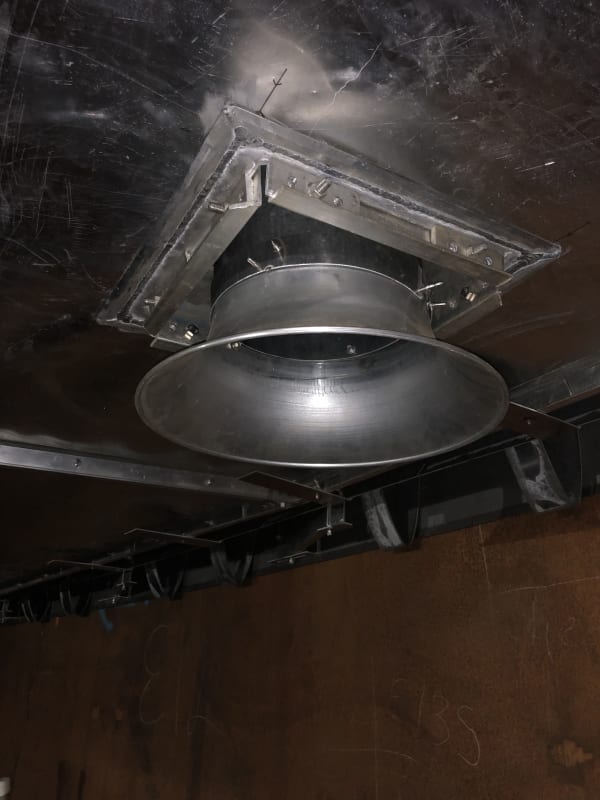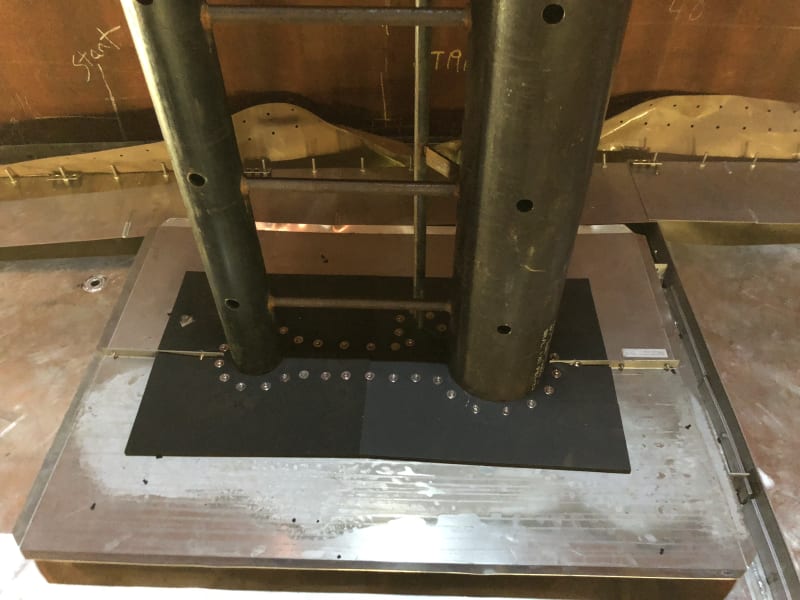Hi ALl,
We recently installed internal floating roofs (IFR) of the full-contact type in two new 150,000 bbl. regular gasoline tanks (145' diam. by 56'high). The IFRs were hydro tested per the request of the client. They were floated to the tanks critical height with successful results. After a couple of months of the tanks being in operation, we are seeing wet spots of gasoline at two locations in both tanks. The wet spots are on the sketch panels near the ATG ladder well and the other in the panel were a gauging cone is located. These are the panels with the largest perforations, and of course they do have a seal. Here are some observations:
[ol 1]
[li] Both IFRs have primary mechanical shoe and secondary loop seals.[/li]
[li] Designed for 8,000 bbl/hr.[/li]
[li] Climate right now is very hot, and we are seeing temperatures in the fixed roof (steel dome) in the 130 deg. F.[/li]
[li] Temperature probe in the liquid is reading 87 deg. F. Probe is located in the in a well pipe in the center of the tank (from the tank roof all the way down to the tank floor).[/li]
[li] IFR panels have drain holes.[/li]
[li] Panels are 4" thick.[/li]
[li] Observations have been made and no sign of loop seal failure are visible.[/li]
[/ol]
We are consulting this issue with the IFC manufacturer, they claim they have never seen this type of situation. We think two things may be causing this issue: (1) either operation is injecting somehow air in the inlet line, from transfers or from the vessel, or (2) the product temperature near the tank shell is higher than in the tank center and thus is near or at the boiling temperature causing vapors to sip through the ATG seal or through the panel drain hole. We continue to monitor the situation to fix the problem.
Has anyone here have had this situation before with this type of full-contact covers? This is the fist experience with full-contact covers, all our experience is with pontoon-type covers. Thoughts on what could be happening? Thanks in advance for your input.
Jorge L. Ramos, Jr., PE
We recently installed internal floating roofs (IFR) of the full-contact type in two new 150,000 bbl. regular gasoline tanks (145' diam. by 56'high). The IFRs were hydro tested per the request of the client. They were floated to the tanks critical height with successful results. After a couple of months of the tanks being in operation, we are seeing wet spots of gasoline at two locations in both tanks. The wet spots are on the sketch panels near the ATG ladder well and the other in the panel were a gauging cone is located. These are the panels with the largest perforations, and of course they do have a seal. Here are some observations:
[ol 1]
[li] Both IFRs have primary mechanical shoe and secondary loop seals.[/li]
[li] Designed for 8,000 bbl/hr.[/li]
[li] Climate right now is very hot, and we are seeing temperatures in the fixed roof (steel dome) in the 130 deg. F.[/li]
[li] Temperature probe in the liquid is reading 87 deg. F. Probe is located in the in a well pipe in the center of the tank (from the tank roof all the way down to the tank floor).[/li]
[li] IFR panels have drain holes.[/li]
[li] Panels are 4" thick.[/li]
[li] Observations have been made and no sign of loop seal failure are visible.[/li]
[/ol]
We are consulting this issue with the IFC manufacturer, they claim they have never seen this type of situation. We think two things may be causing this issue: (1) either operation is injecting somehow air in the inlet line, from transfers or from the vessel, or (2) the product temperature near the tank shell is higher than in the tank center and thus is near or at the boiling temperature causing vapors to sip through the ATG seal or through the panel drain hole. We continue to monitor the situation to fix the problem.
Has anyone here have had this situation before with this type of full-contact covers? This is the fist experience with full-contact covers, all our experience is with pontoon-type covers. Thoughts on what could be happening? Thanks in advance for your input.
Jorge L. Ramos, Jr., PE



